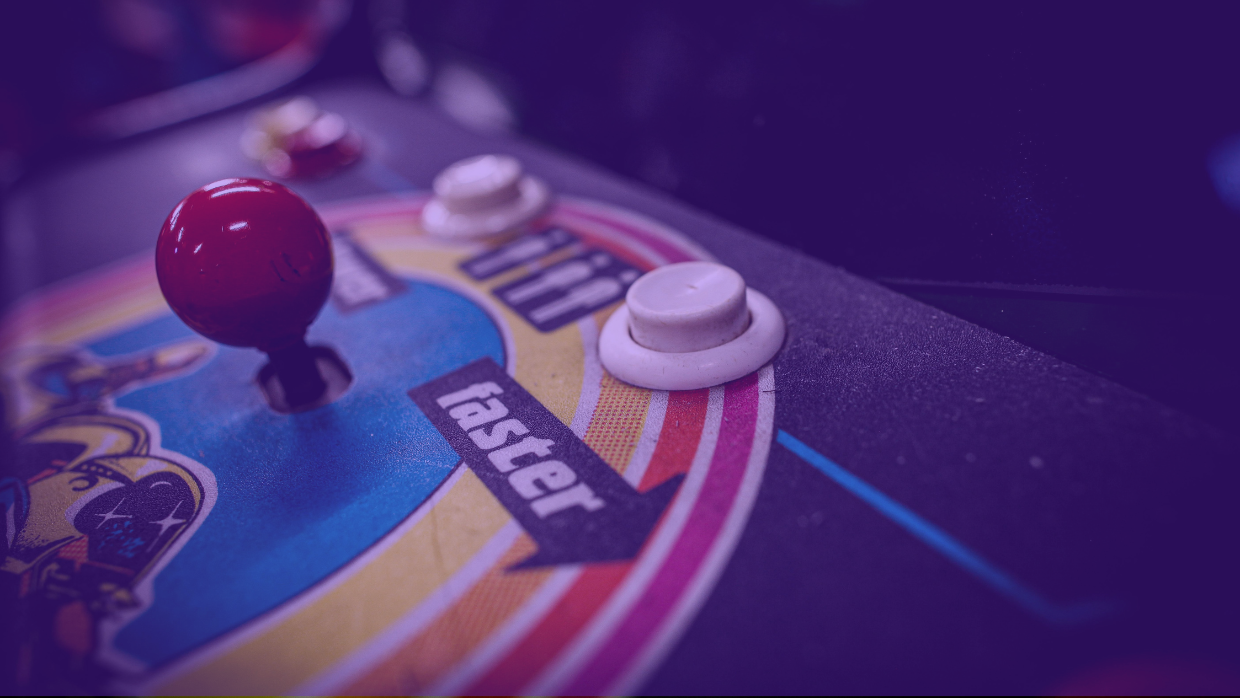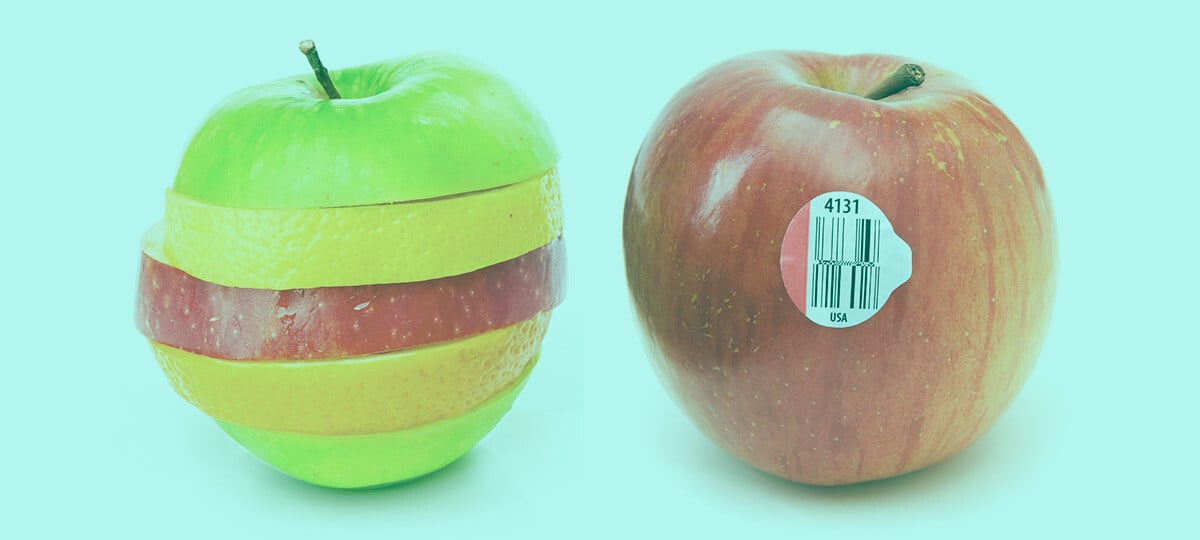5 Ways AI Is Transforming Media & Entertainment
October 25, 2025 12 min read

AI doesn’t just help media companies move faster. It’s deciding what to make, how to package it, who to send it to, and when.
Across media and entertainment, AI has quietly moved from experiment to core infrastructure. According to the Reuters Institute’s Journalism, Media, and Technology Trends 2025 report, 87% of media leaders say their newsrooms are already being transformed by generative AI. In other words: this isn’t edge tech—it’s becoming the new baseline.
“I think AI is going to fundamentally change the way we do entertainment in many ways that we have not even foreseen yet,” Shobana Radhakrishnan, senior director of engineering at Google TV, shared on an episode of X-Team’s Keep Moving Forward podcast. “We are just getting started and scratching the surface.”
That change is happening in content creation. In personalization. In monetization. In audience expectations. And in the way media teams are staffed, scaled, and structured.
This guide breaks down the five biggest AI-driven shifts reshaping media right now and how media tech leaders are adapting in real-time.
#1 Agentic AI & Autonomous Workflows
Agentic AI is quietly becoming the backbone of modern media operations. Behind the scenes, AI systems handle tasks like generating metadata, localizing assets, and scheduling rollouts without constant human input. What once took hours or days now happens in real time, with AI driving faster, more efficient content flows.
We’re entering an era of agentic collaboration, where AI systems specialize, coordinate, and execute across the content lifecycle. One might model audience sentiment, another refines the edit, and a third decides where and when to publish. It’s the new media machine, built for speed and scale.
Take Hubert Burda Media, a major German media conglomerate, as an example. They've built an AI-driven production pipeline where ChatGPT generates scripts, ElevenLabs provides voice overs, and D-ID creates animated presenters—all connected through APIs. These AI tools collaborate autonomously to turn written content into polished video in minutes.
This shift isn’t about replacing humans—it’s about extending what they can do. “We’re not looking to replace engineers—we’re looking to provide the ability for engineers to do more work in less time,” Shahin Mohammadkhani, vice president of Engineering and AI at United Talent Agency, shared on the X-Team podcast. AI becomes someone’s force multiplier.” By handling repetitive tasks, AI allows human teams to focus on higher-value creative and strategic work.
Kristen Kelly, global head of media at Accenture Song, echoed this sentiment in an interview with Creative Salon: “Embracing agentic AI is then like adding another member to the team, one that can function autonomously, giving everyone else the time and opportunity to apply their expert, strategic, and creative problem-solving skills to the issues that really matter.”
The result is a reimagined production environment: faster timelines, leaner teams, and workflows that scale across formats, languages, and platforms.
Where Agentic AI Is Already Making an Impact in Media
AI isn’t replacing creative teams, it’s accelerating their productivity. The organizations that deploy these systems well will see faster turnaround, higher content velocity, and greater flexibility across platforms.
- Content Orchestration: AI agents plan and execute production tasks, from storyboarding to tagging, with minimal oversight.
- Dynamic Localization: AI translates and dubs content in real time, enabling faster global distribution.
- Post-Production Acceleration: AI handles editing, summarization, and formatting—freeing humans to focus on creativity, not cleanup.
Who to Hire
- AI-First Project Managers: Hire operations leads who can manage human + AI collaboration at scale.
- System Integrators: Seek engineers fluent in APIs, multi-agent architecture, and modular tools.
- Localization Technologists: Add roles focused on building and optimizing AI localization pipelines.
Reimagining Media Buying with Agentic AI
Scope3’s Agentic Media platform demonstrates how agentic AI can transform the media supply chain. It coordinates AI agents to manage tasks like identifying high-quality inventory, eliminating brand safety risks, optimizing carbon-efficient ad placements, and enforcing brand standards. These agents work in sync to automate complex media buying decisions that once required multiple teams.
#2 Generative Personalization at Scale
Audiences are no longer passive. They’re curators, skipping, swiping, and seeking out content that feels like it was made for them. That’s why personalization isn’t a nice-to-have. It’s the price of entry.
According to IAB’s State of Data 2025 report, 73% of media executives say real-time personalization will be key to increasing viewer engagement and lifetime value over the next two years. Netflix has long been at the forefront of this personalization trend with a next-gen AI search tool that interprets user intent, dynamically recommends content, and adjusts thumbnails based on behavior, all aimed at reducing churn and boosting satisfaction.
This level of hyper-targeting isn’t just about driving clicks. It’s reshaping how content is created, packaged, and distributed—fueling a feedback loop where every data point helps AI get smarter, faster.
On the brand side, Hatch, a sleep technology company, partnered with Monks to produce 60 generative AI-powered ad variants in six weeks. Using tools like Monks.Flow and Google Gemini to tailor messaging to different personas, the campaign saw an 80% lift in click-through rates and a 31% drop in cost-per-purchase.
Agencies now list audience identification and segmentation as their top use case for AI. IAB research found a third are even using generative AI to build synthetic personas to fill gaps where traditional targeting data is no longer available.
Meanwhile, Pinterest is using AI to refine search results by body shape, skin tone, and hair pattern—helping users feel seen through more inclusive algorithmic design.
As generative AI continues to evolve, we’ll see a growing divide between brands that treat audiences as passive consumers and those that engage with them on a personal level.
Where AI Is Already Making an Impact
Generative personalization is enhancing how brands connect with audiences. By using AI, companies can scale personalized content, boosting engagement and driving loyalty across platforms.
- Search & Discovery: Enhanced search tools interpret intent and viewing behavior to surface smarter, more relevant results.
- Synthetic Personas: Agencies are using generative AI to simulate user profiles and improve targeting where first-party data falls short.
- Creative Versioning: AI tools are producing and optimizing ad variants in real time—adapting messaging to different audiences at scale.
Who to Hire
- AI-Enabled Creatives: Hire marketers fluent in prompt writing and generative workflows to accelerate asset creation and testing.
- Behavioral Analysts: Look for talent that can translate real-time engagement data into actionable personalization strategies.
- Model Trainers: Add roles that focus on fine-tuning generative models to reflect brand voice and audience nuance.
The Ultimate AI Playlist
Spotify uses a combination of collaborative filtering, NLP, and reinforcement learning to power one of the most advanced personalization engines in media. It analyzes listening behavior, song characteristics, online conversations, and user feedback to deliver tailored recommendations in real time. This multi-layered AI stack ensures each user’s experience feels uniquely curated, boosting engagement, retention, and satisfaction.
#3 AI-Powered Monetization
The old monetization playbook is breaking. CPMs (cost per 1000 impressions) are dropping, user behaviors are splintering across platforms, and loyalty is increasingly difficult to build. Media companies need new ways to optimize revenue, fast.
Mohammadkhani says this is UTA’s focus: “We’re looking at AI in three main areas: direct technology, business operations, and revenue-generating ideas.” He adds, “AI can give us opportunities that we do not see or areas of growth that we may not naturally pick.”
AI is stepping in not just as a tool, but as an economic engine. Intelligent systems are dynamically adjusting paywalls, optimizing ad loads, testing price elasticity, and bundling offers in real time. What used to require weeks of analysis and A/B testing can now be handled on the fly by adaptive models trained on live behavioral data.
For example, YouTube is using AI to optimize mid-roll ad placements is using AI to optimize mid-roll ad placements, identifying natural breaks like pauses or scene changes to reduce viewer disruption. This update, rolling out in May 2025, improves watch time and boosts CPMs, with testing identifying 5% revenue growth compared to manual placements.
The shift is clear: Monetization is moving from fixed models to fluid systems. Expect to see a wave of AI-driven experimentation across dynamic pricing, predictive LTV segmentation, and creative performance forecasting.
Where AI Is Already Making an Impact
AI is making it easier for brands to adapt quickly to changing conditions. By automating pricing adjustments, refining offers, and improving targeting, companies can make smarter decisions in real time, boosting revenue and staying ahead of the competition.
- Dynamic Pricing: AI adjusts product and content prices in real time based on market demand, user behavior, and inventory.
- Ad Optimization: Platforms like YouTube are using AI to place ads more intuitively—boosting revenue and retention.
- Predictive Packaging: AI helps teams bundle and promote the right mix of offerings, from subscription tiers to regional licensing.
Who to Hire
- Revenue Engineers: Hire technical talent who can work at the intersection of data, pricing models, and personalization.
- AI Product Managers: Look for PMs with experience in monetization-focused machine learning systems.
- Ad Tech Specialists: Add roles focused on fine-tuning AI-powered advertising tools to match audience and brand needs.
Building an AI Video Engine
EX.CO uses AI to help publishers like 1XL deliver personalized video experiences and maximize ad revenue. Its platform analyzes contextual signals and user behavior to recommend relevant content and optimize mid-roll ad placement. Within three months of onboarding, 1XL doubled its monthly revenue and saw a 4x increase in video dwell time, proving that smarter monetization starts with smarter content delivery.
#4 AI-Powered Immersive Experiences
Immersive experiences are no longer on the fringe; they’re becoming the frontier of entertainment. From virtual concerts and AI-enhanced livestreams to real-time, multi-platform narratives, audiences aren’t just watching anymore, they’re stepping inside the story.
By 2028, the World Economic Forum predicts that 20% of people will engage weekly with immersive, AI-powered content, up from less than 1% just two years ago.
Radhakrishnan predicts: “Entertainment is going to be even more seamless than it already is, and even more ubiquitous...AI will help generate a sense of continuity and interactivity irrespective of which device you're engaged with.”
Whether it’s Gen Z choosing shows based on interactivity or creators pushing the limits of volumetric video to build 3D, explorable scenes, the boundary between viewer and participant is dissolving. AI is driving this shift, enabling dynamic story arcs, real-time dubbing, cross-platform continuity, and content that adapts based on audience behavior.
The momentum isn’t just creative; it’s commercial. In August 2025, The Wizard of Oz at the Las Vegas Sphere will premiere as a landmark in immersive, AI-enhanced storytelling. Using more than 1.2 petabytes of processed data and generative models like Veo 2 and Imagen 3, the reimagined classic will fill Sphere’s 16K wraparound LED display with expanded scenes, digitally reconstructed characters, and a surround-sensory experience designed for modern audiences.
What’s happening at Sphere is a microcosm of a broader shift. Brands are embedding AI across the media value chain to deliver one-to-one experiences that are intuitive, emotional, and increasingly immersive.
This shift isn't just changing formats—it’s redefining expectations. Immersive tech, powered by AI, is setting a new bar for engagement and creative possibility.
Where AI Is Already Making an Impact in Immersive Media
AI is turning audiences into active participants with dynamic storylines and real-time interactions. As technology advances, brands will create more personalized and engaging content, setting new standards for creativity and audience expectations.
- Volumetric Video & 3D Capture: AI enables real-time processing of spatial video, allowing audiences to explore scenes from any angle.
- Dynamic Storytelling: AI helps shape adaptive story arcs based on viewer behavior, mood, or choices—enabling more personalized narratives.
- Cross-Platform Continuity: AI ensures consistency across formats and devices, creating seamless transitions between screen, stream, and immersive environments.
Who to Hire
- Creative Technologists: Seek hybrid thinkers who can merge storytelling with machine learning to create responsive, emotionally resonant experiences.
- Realtime Pipeline Engineers: Hire technical talent who can build rendering and compute pipelines capable of supporting spatial, volumetric, and real-time content delivery.
- AI Experience Designers: Look for creatives who can design adaptive interfaces and user flows across immersive platforms like AR, VR, and mixed reality.
Immersive AI at the Olympics
At the Paris 2024 Olympic and Paralympic Games, Intel brought immersive storytelling to life with cutting-edge AI. Using Intel® Xeon® processors and OpenVINO™, two volumetric video studios captured over 3,000 AR clips of athletes in 3D. Fans could explore these dynamic moments across platforms, creating a new level of presence and engagement. A second activation, built with Samsung, used AI to match fans’ movements to Olympic sports—turning spectators into participants through personalized, real-time interaction.
#5 The Rise of AI-Native Media Organizations
AI is central to how the most adaptive organizations function.
“AI is not just a tool for us, it's becoming part of the foundation of how we operate,” says Phil Wiser, CTO of Paramount Global. “We're building cross-functional teams to make sure AI is not siloed, but is part of our DNA as a media company.”
That evolution is changing how teams are structured. Traditional hierarchies are giving way to faster, flatter systems designed for adaptability. Intelligent systems are embedded across the content lifecycle, shaping everything from creative development to campaign planning and distribution.
The result is a new kind of operating model—one where AI doesn’t just optimize tasks, but informs strategy, accelerates decision-making, and drives momentum across the business.
But becoming AI-native takes more than infrastructure. It takes a culture that rewards curiosity and resilience, says Molly Struve, staff site reliability engineer at Netflix. “The only way to get people to dive deep is to make a safe space for them to fail — and then encourage learning from that failure.” Teams need trust to experiment, safety to iterate, and space to grow alongside increasingly intelligent systems.
AI-native organizations aren’t defined by the tools they use, but by how they adapt. They respond to signals, not schedules. They design for flexibility, not formality. And they treat failure as a catalyst, not a cost.
Where AI Is Already Making an Impact
AI is reshaping how organizations operate by becoming deeply embedded in their structure and culture. With AI integrated across teams and processes, companies can adapt faster, make data-driven decisions, and foster a culture of experimentation and growth.
- Strategic Decisioning: AI analytics inform real-time strategic shifts, from content development to distribution optimization.
- Agile Operations: Intelligent systems streamline cross-functional workflows, enhancing team responsiveness and productivity.
- Cultural Innovation: Organizations embed continuous experimentation and iteration into their core operating principles.
Who to Hire
- Cross-Functional Leaders: Recruit executives who can lead interdisciplinary teams combining AI, creative, and operational expertise.
- AI-Culture Champions: Hire individuals focused on embedding a growth mindset around AI adoption and innovation.
- Adaptive Strategists: Seek talent who can use AI-driven analytics to rapidly adapt strategies to shifting market dynamics.
AI-Powered Personalization at Scale
Netflix applies AI across the full content lifecycle, from personalized recommendations to production planning. Its engine analyzes viewing behavior and timing to serve tailored suggestions to over 260 million users. Behind the scenes, AI helps with location scouting, scheduling, and cost optimization. By embedding intelligence into both user experience and operations, Netflix shows how AI can drive personalization and efficiency at global scale.
Media Has Entered Its AI Era
Media in 2025 runs on AI. Intelligent systems drive everything from content creation and hyper-personalization to monetization and next-gen storytelling, all at a pace that keeps accelerating.
But technology isn't the whole story. The real advantage goes to companies treating AI as a creative partner, not just another tool. It's about amplifying ideas, sharpening strategy, and unlocking rapid innovation.
Today's leading media brands are reinventing themselves with AI. They're breaking rules, setting new expectations, and reshaping entertainment.
If you’re rethinking how your team makes, packages, personalizes and monetizes content, bring in developers who’ve done it at scale. X-Team embeds AI-native engineers inside media orgs to ship agentic workflows, real-time personalization, and revenue systems that learn as they run.
TABLE OF CONTENTS



